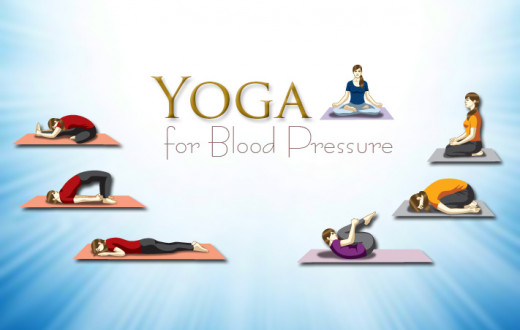With close to six billion minds active from moment to moment, there are endless streams of thoughts on every aspect of creation. Some thoughts perceive reality the way it is, some are imagination and some are simple misconceptions. While there are myths about many topics, one of the most popular one is meditation. Say the word, ‘meditation’ and all kinds of images and notions conjure up: is this for me? I can’t sit for long hours? Who wants to meditate anyways?
Here is a list of the most common myths, hoping that any confusion that you might have is cleared.
Myth #1 Meditation is concentration
Meditation is actually de-concentration. Concentration is a benefit of meditation. Concentration requires effort and meditation is absolute relaxation of the mind. Meditation is letting go, and when that happens, you are in a state of deep rest. When the mind is relaxed, we can concentrate better.
Myth #2 Meditation, a religious practice
Yoga and meditation are ancient practices that transcend all religions. For meditation, there is no bar on any religion. In fact, meditation has the ability to bring religions, nations and faiths together. Just like the sun shines for everyone, and the wind blows for everyone, meditation benefits everyone. “We encourage people from all backgrounds, religions and cultural traditions to come together and meditate in a spirit of celebration,” says Gurudev Sri Sri Ravi Shankar.
Myth #3 Sit in the lotus posture to meditate
The Patanjali yoga sutras are perhaps one of the most scientific and detailed study that man has produced dealing with the nature of the mind. “Sthirasukhamasanam,’’ a yoga sutra by Patanjali explains that while meditating it is more important to be comfortable and steady. This helps us to have a deeper experience in meditation. You can sit cross-legged, on a chair, in a sofa – it is fine. Yet when you start your meditation it is good to maintain a posture where the spine is erect and head, neck and shoulders are relaxed.
Myth #4 Meditation is for old people
Meditation is universal and adds value to lives of people of all age groups. One can start mediating at the age of eight or nine. Just like a shower keeps the body clean, meditation is like the shower for the mind.
“After practicing meditation, I do not get as angry as before,” shares Sandra, a middle school student. “Just a few minutes of meditation keeps me calm all day,” shares 19-year-old Karan, another young mediator. “Meditation gives me the zeal and enthusiasm to spread positivity around me,” shares a 25-year-old.
Myth #5 Meditation is like hypnotizing yourself
Meditation is an antidote for hypnosis. In hypnotism, the person is not aware of what he or she is going through. Meditation is complete awareness of each and every moment. Hypnotism takes the person through the same impressions that are in his mind. Meditation frees us from these impressions so that our consciousness is fresh and clear. Hypnotism increase metabolic activity, meditation reduces it. “Those who practice pranayama and meditation regularly cannot be hypnotized easily,” says Gurudev Sri Sri Ravi Shankar.
Myth #6 Meditation is thought control
Thoughts do not come to us by invitation. We become aware of them only after they have arrived! Thoughts are like clouds in the sky. They come and go on their own. Trying to control thoughts involves effort and the key to a relaxed mind is effortlessness. In meditation, we do not crave for good thoughts nor are we averse to bad thoughts. We simply witness and eventually transcend thoughts and move into that deep inner silent space.
Myth #7 Meditation is a way of running away from problems
On the contrary, meditation empowers you to face problems with a smile. Skills develop in us to handle situations in a pleasant and constructive manner through yoga and meditation. We develop the ability to accept situations as they are and take conscious action instead of brooding over the past or worrying about the future. Meditation nurtures inner strength and self-esteem. It acts like an umbrella during rainy days. Challenges will arise, but we can still move ahead with confidence.
Myth #8 You have to meditate for hours to go deep
You do not have to sit for hours to have a deeper experience in meditation. The connection with that deep inner core of your being, your source can happen in just a fraction of a moment. Just a 20-minute session of Sahaj Samadhi meditation every morning and evening is sufficient to take you on this beautiful inward journey. As you practice your meditation every day, the quality of your meditation will improve gradually.
Myth #9 If you meditate, you will become a sanyasi (monk or recluse)
You do not have to give up material life to meditate or progress on the spiritual path. In fact, the quality of your enjoyment improves greatly as you meditate. With a relaxed and peaceful mind, you are able to live happily and make others in your family and surroundings happy too.
Myth #10You can only meditate at certain times, facing certain directions
Anytime is a good time for meditation and all directions are good for meditation. The only thing to keep in mind is that your stomach should not be full; else you may doze off instead of meditating. However, it is a good practice to meditate during sunrise and sunset (morning and evening) as it can keep you calm and energetic throughout the day.
We hope they help to bring greater clarity on the effect and the benefits of meditation in your lives and reinforce the need to meditate. Meditate with us!
By Divya Sachdev
Inspired by Sri Sri Ravi Shankar's wisdom talks
Based on inputs by Bharathy Harish, Sahaj samadhi Meditation teacher.
Graphics by Niladry Dutta


























